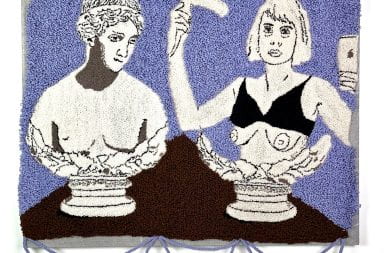
A student walks by Mirror Lake on Oct. 12. Ohio State started draining the lake on Oct. 11. Credit: Nick Roll | Campus Editor
Construction on Mirror Lake is now underway, and with less than a month until the annual jump was expected to occur, friends of Austin Singletary are speaking out about the end of the tradition.
Singletary was a third-year in human nutrition when he died after sustaining injuries he received while jumping into the lake last November as part of an unofficial tradition that took place before the OSU-Michigan football game.
Ohio State began an 18-month construction project on Oct. 11 which is set to include a redesign of the area. The result is set to include a design of the lake with a sloping entry lined with wetland marsh, making it nearly impossible for students to jump into the lake.
The design’s focus, Ohio State has said, is to create a more sustainable and historically accurate depiction of the lake.
Kyle McKinney, a second-year in business, was close with Singletary, and referred to him as his cousin, though they are not related. He said Singletary’s tragic death is now being viewed by some students as the reason the jump is ending, creating a negative attitude surrounding the incident.
“I don’t think that one person can be a scapegoat for a tradition being ended,” McKinney said. “I don’t think that one person should be blamed or one person should receive a negative portrayal of themselves because of one event.”
OSU has said that ending the jump, while a university priority, is a byproduct of the construction and redesign, but not its intent.
“The jump ending is a consequence of the construction, but not the driving factor in restoring the grounds,” OSU spokesman Chris Davey said when the renovations were announced. “This is the culmination of years of planning and discussion that involved the student body.”
Steph Bitto, a third-year in accounting who met Singletary through mutual friends, said she thinks students who are upset about the jump ending didn’t know Singletary, so they only see him as “a kid who jumped in a lake and died.”
She said she thinks this misrepresentation of Singletary and his death is why students have reacted to the construction and ending of the jump in a critical way.
“I’m sure that if I was on the outside looking in and did not know him as person, I would feel the same way. But if you really think about it — it’s the smart move to do,” Bitto said. “(Students) have to remember that it’s someone’s son, someone’s brother, someone’s friend that went through this and they have to deal with that for the rest of their lives.”
AJ King, a spring 2016 graduate who was Singletary’s mentor through a program run through OSU’s Office of Diversity and Inclusion, said he understands the frustrations that students feel about the loss of a tradition. However, he also said he doesn’t believe the jump is worth the risk.
“We can still get drunk … but we don’t need to jump in the lake,” King said. “After the loss of Austin’s life — someone who would have done amazing things at OSU and beyond — it’s time to shut that down.”
Bitto said the tradition was an accident waiting to happen, which is why she feels relieved that the lake is no longer being an accessible area for students to jump into.
“It’s not safe, and it’s awesome that there can be new alternatives,” she said. “To have something else and to block it off and drain it is better off for everybody so no one else gets hurt.”
King argued that the Mirror Lake itself carries more significance than the relatively new tradition of jumping in it.
“Before the ’90s, people weren’t jumping in the lake like that and we got along just fine,” King said. “I see the lake as a huge part of the culture of Ohio State. I completely understand that and I support that notion. However, the jump itself clearly is extremely dangerous.”
Nick Roll contributed to this story


